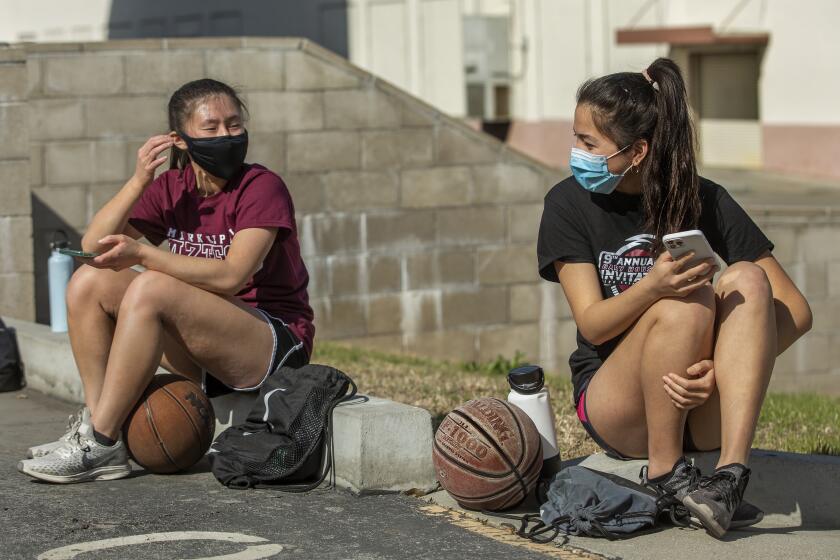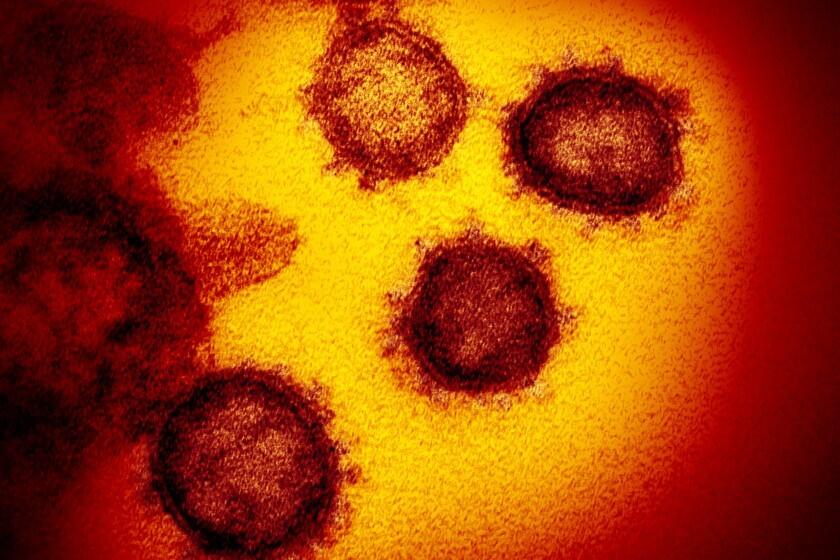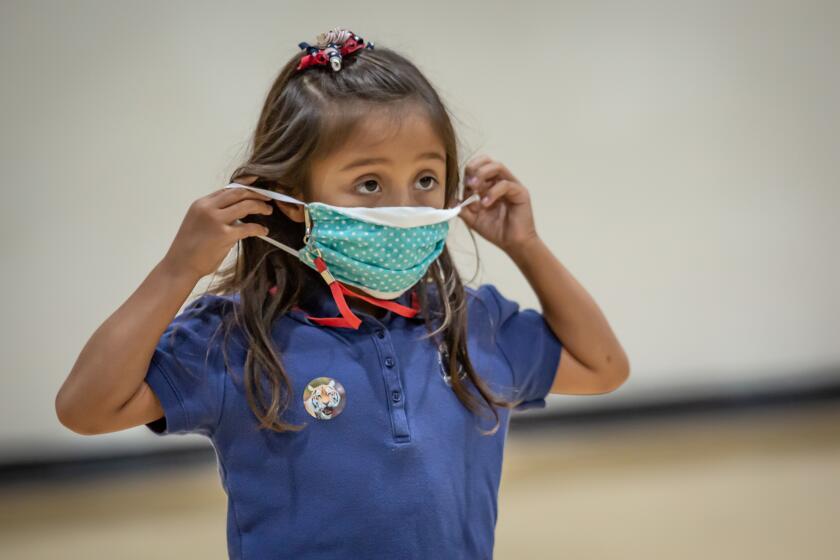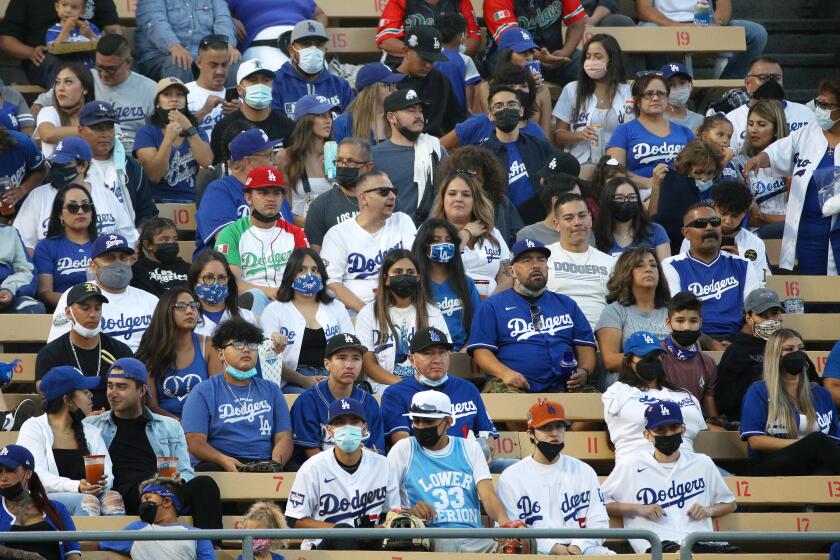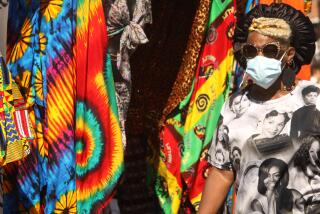L.A. County records big drop in COVID-19 hospitalizations
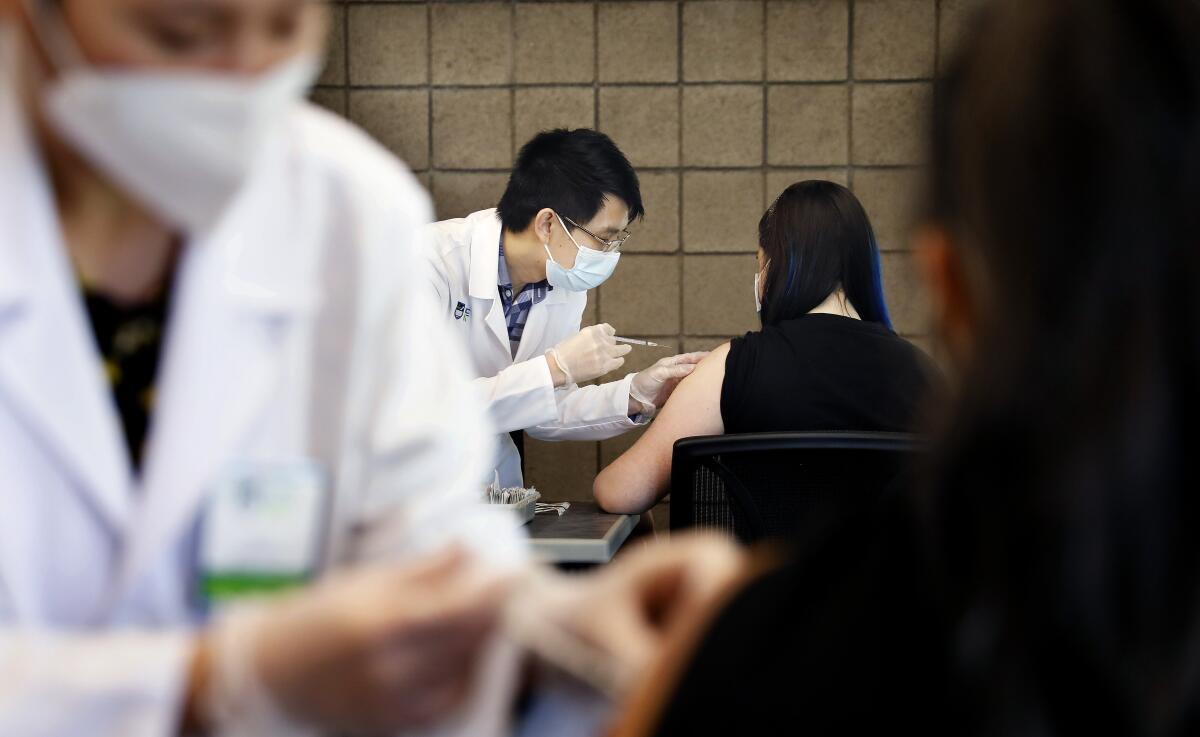
- Share via
The number of people hospitalized with COVID-19 in Los Angeles County has dropped below 1,000 for the first time in two months — underscoring the region’s slow but steady progress in turning the tide of the latest coronavirus surge.
On Tuesday, 991 coronavirus-positive patients were receiving hospital care countywide. That’s down about 40% from the start of September, state data show.
In mid-August — the height of the current Delta-variant-fueled wave — nearly 1,800 people countywide were hospitalized with COVID-19 on some days.
The region has also seen a significant decline in the number of people ill enough to require intensive care. As of Tuesday, 305 patients were in intensive care units throughout the county, a 31% drop since the beginning of the month.
While California has not reinstituted sweeping restrictions, the state and many local health departments have taken steps to tackle the Delta variant.
California’s most populous county both reflects and dictates the pandemic’s statewide trajectory. Statewide, 5,986 coronavirus-positive patients were hospitalized Tuesday, a 28% drop since the start of the month.
But that top-level trend is not reality in every corner of California.
Some hospitals in the state’s Central Valley continue to be deluged with COVID-19 patients. Health officials have reported that some critically ill people have had to wait days to be transferred into the intensive care unit from the emergency room. And some facilities in Fresno County have been perilously close to having to ration healthcare because of limited resources and personnel.
Throughout the wider San Joaquin Valley — which the state defines as Calaveras, Fresno, Kern, Kings, Madera, Mariposa, Merced, San Benito, San Joaquin, Stanislaus, Tulare and Tuolumne counties — hospitals have reported having fewer than 10% of their cumulative staffed adult ICU beds available for 22 straight days.
“We’re still just right there where we’re looking at things on a day-by-day, and even hour-by-hour, basis to see how we can match the resources with the needs,” Fresno County interim health officer Dr. Rais Vohra said at a news conference last week.
The four other state-outlined regions — Northern California, the Bay Area, Greater Sacramento and Southern California — all had at least 15.8% of their staffed adult ICU beds available as of Tuesday.
One Fresno area hospital had nine critically ill patients who weren’t able to get into the intensive care unit for more than three days.
Overall, the Bay Area and Southern California have the lowest COVID-19 hospitalization rates in the state. For every 100,000 residents, the Bay Area has a rate of nine COVID-19 patients hospitalized; Southern California has 12.
By contrast, the Greater Sacramento region has a rate of 15; rural Northern California, 31; and the San Joaquin Valley, 34.
Some experts say it can be prudent to implement emergency measures, such as requiring masks in indoor public settings, when COVID-19 hospitalization rates exceed five or more for every 100,000 residents.
When can parents expect their kids to be eligible for a COVID vaccine? Here’s the latest.
Even within Southern California, there are differences in hospitalization rates. For every 1`00,000 residents, Los Angeles and Orange counties are both reporting 10 COVID-19 hospitalizations, while San Diego County is reporting 13 and Ventura County, 11. But Riverside County is reporting 18, and San Bernardino County is at 19.
The statewide rate is 15 COVID-19 hospitalizations for every 100,000 residents.
Hospitalizations are the middle link in the chain of coronavirus transmission, reflecting increases in infections that typically occurred weeks earlier and forecasting rising deaths in the days and weeks to come.
Given the hospitalization trends, it’s no surprise that L.A. County and California as a whole have seen their daily case rates plummet from their summertime heights.
Over the last week, California reported an average of 7,733 new coronavirus cases per day, with 1,492 of those infections recorded in L.A. County, according to data compiled by The Times. Both figures are down about 27% from two weeks ago.
The number of people dying from COVID-19, however, remains elevated. An average of 110 new deaths have been reported daily over the last week, up about 24% from two weeks ago.
Over the course of the pandemic, COVID-19 has claimed the lives of almost 68,000 Californians.
Even with the growing indications that the current coronavirus wave is receding, officials continue to stress that those who are unvaccinated remain exposed to infection and illness — especially given the omnipresence of the highly infectious Delta variant.
Not only are officials advocating for people to get vaccinated against COVID-19, but they’re also urging people to get their flu shots, as lackluster vaccination rates for either disease could result in a surge of respiratory illness this fall and winter, renewing pressure on hospitals.
From Sept. 5 to 11, the average coronavirus case rate among unvaccinated Californians who were at least 16 years old was about 63 per 100,000 people per day — nearly eight times the rate among similarly aged vaccinated residents, according to the California Department of Public Health.
The risk of being hospitalized is also far greater for the unvaccinated.
In L.A. County, 1,359 fully vaccinated people had been admitted with COVID-19 as of Sept. 14. However, that represents only 0.025% of the 5.44 million people who had completed their inoculation regimen by that date.
With data continuing to demonstrate the efficacy of COVID-19 vaccines, officials are increasingly contemplating mandating them in certain workplaces or as a precondition of visiting specific businesses or venues.
In the five states with the lowest levels of vaccination, the COVID-19 death rate this summer was more than triple the rate in the five states where vaccination is most common.
Last week, L.A. County issued a new health order that will require patrons and employees of indoor bars, wineries, breweries, nightclubs and lounges to have at least one vaccine dose by Oct. 7 and be fully vaccinated by Nov. 4.
Starting Oct. 7, participants and workers at outdoor events or settings with more than 10,000 attendees — including theme parks and sports stadiums — will also need to provide proof of vaccination or show that they’ve recently tested negative for the coronavirus.
Such requirements are already in place statewide for indoor events with more than 1,000 attendees.
“Our hope is that, with full implementation of these mandates, we create conditions that don’t favor a continual cycle of surges fueled by new variants of concern,” L.A. County Public Health Director Barbara Ferrer said Tuesday.
The L.A. City Council is also considering its own law to require customers of indoor restaurants and gyms to have at least one dose of a COVID-19 vaccine. City attorneys are drafting a proposed ordinance.
L.A. County will implement vaccine-or-testing requirements for large outdoor sporting events and theme parks as well as proof of vaccination at indoor bars, wineries, breweries and nightclubs.
L.A. is far from alone.
West Hollywood on Oct. 11 will require patrons 18 and older to show proof they are fully vaccinated to enter indoor restaurants, bars, clubs, theaters and gyms, as well as personal care establishments, including barbershops, nail salons and tanning services.
Palm Springs and neighboring Cathedral City have ordered patrons 12 and older to provide proof of COVID-19 vaccination or a recent negative coronavirus test to enter indoor restaurants and bars.
San Francisco and Berkeley already require customers 12 and older to show proof of vaccination to enter indoor bars, restaurants, clubs, gyms and large indoor events. A negative coronavirus test is not allowed as an alternative.
In Contra Costa County, a new health order took effect Wednesday stipulating that customers age 12 and older must show proof of full vaccination or a negative coronavirus test result before entering indoor restaurants, bars and gyms.
On Monday, a health order in San Jose took effect, requiring operators or hosts of large indoor events at city-owned facilities with more than 50 guests to require all attendees 12 or older to show proof of full vaccination before entering the facility, including SAP Center — home to the San Jose Sharks — and McEnery Convention Center.
More to Read
Sign up for Essential California
The most important California stories and recommendations in your inbox every morning.
You may occasionally receive promotional content from the Los Angeles Times.
